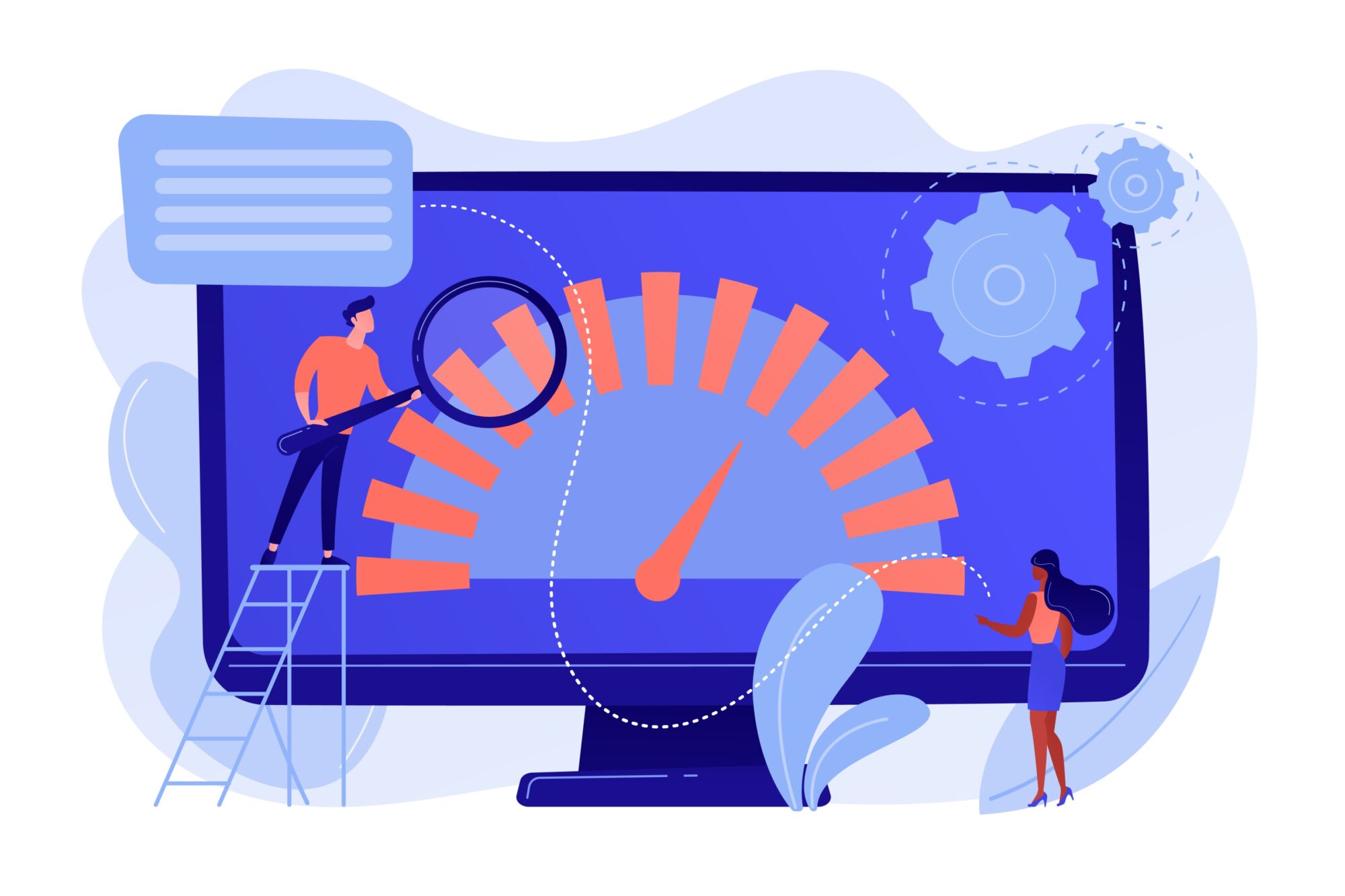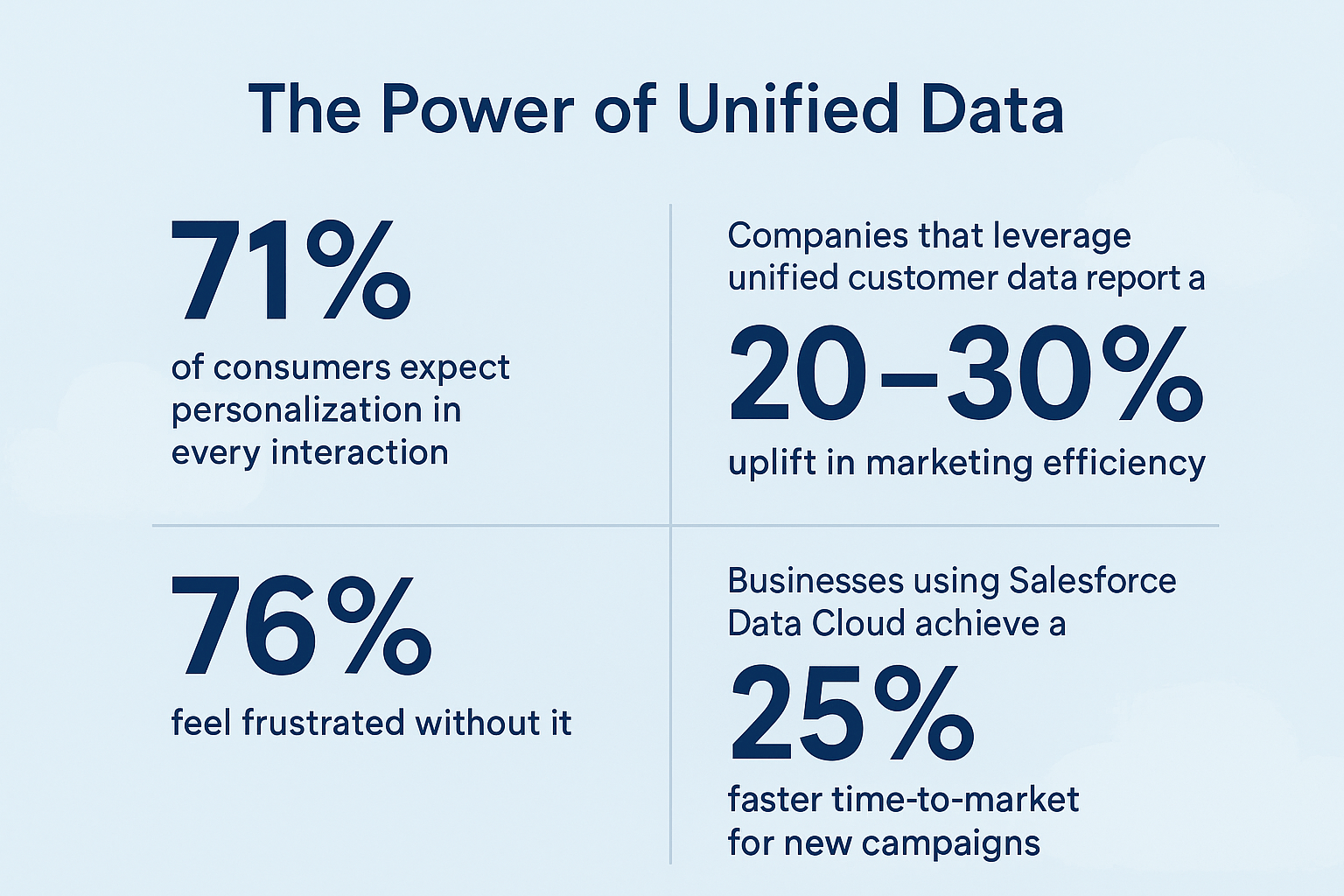Businesses can no longer afford to treat customer data as scattered fragments living in disconnected systems. Every click, purchase, email, and conversation generates insights that, if properly unified, can reshape how companies build relationships and drive revenue. This is where Salesforce Data Cloud enters the stage. Positioned as a next-generation data platform, it transforms raw information into actionable intelligence, enabling businesses to create deeply personalized experiences at scale.
This complete guide will walk through what Salesforce Data Cloud is, why it matters, and how businesses of all sizes can benefit from its capabilities. From practical use cases to implementation strategies, you’ll gain a comprehensive view of how this technology can serve as the backbone of a modern customer-centric organization.
What Is Salesforce Data Cloud?
Salesforce Data Cloud is a scalable platform that consolidates customer data from multiple sources into a single, unified profile. Rather than having sales, marketing, and service teams operate in silos, the platform stitches together touchpoints into a 360-degree view of the customer.
Imagine you run a retail brand. A customer browses your website, interacts with your chatbot, makes an in-store purchase, and then opens your promotional email. Without Salesforce Data Cloud, these actions sit in disconnected tools. With it, the actions merge into a single profile, giving your teams a full context of the customer journey.
Why Salesforce Data Cloud Matters for Businesses
The business world has entered an era where personalization is not optional—it is expected. Studies suggest that 71% of customers expect companies to deliver personalized interactions, while 76% feel frustrated when personalization doesn’t happen. For organizations dealing with massive amounts of fragmented data, delivering on this expectation can feel impossible.
That’s why Salesforce Data Cloud matters. It transforms disconnected interactions into a seamless customer story. By doing so, businesses can:
- Improve marketing precision through segmented campaigns.
- Boost sales efficiency by surfacing the right opportunities.
- Enhance service experiences with context-rich support.
In effect, the platform allows businesses to shift from reactive operations to proactive engagement.
How Salesforce Data Cloud Works
To understand Salesforce Data Cloud, it helps to break down its core functionality:
- Data Ingestion: The platform collects information from CRM systems, web analytics, point-of-sale terminals, mobile apps, and even external databases.
- Identity Resolution: Through AI-driven matching, Salesforce Data Cloud eliminates duplicates and unifies data into a “golden record” for each customer.
- Segmentation and Activation: Businesses can create highly granular segments and push them into marketing, commerce, or service workflows.
- Real-Time Processing: Unlike older systems that update overnight, Salesforce Data Cloud delivers real-time insights so actions can be taken instantly.
This combination ensures that customer data doesn’t just exist—it’s usable and powerful.
Key Features of Salesforce Data Cloud
Unified Profiles
At the heart of the platform are unified customer profiles. Each record aggregates demographic, behavioral, and transactional data into one place, ensuring no detail is overlooked.
AI-Powered Insights
By integrating with Salesforce Einstein, Salesforce Data Cloud provides predictive recommendations such as which customers are likely to churn or which prospects are primed to convert.
Scalability

Whether handling thousands or millions of records, Salesforce Data Cloud is designed to scale without performance trade-offs.
Open Ecosystem
The platform integrates with external systems, meaning businesses aren’t locked into the Salesforce ecosystem alone. APIs ensure flexibility for diverse industries.
Benefits for Different Business Functions
Marketing Teams
For marketers, Salesforce Data Cloud means campaigns can shift from generic blasts to hyper-targeted communications. For instance, a travel company can use it to identify families who booked summer vacations in the past and target them with winter holiday promotions.
Sales Teams
Sales professionals gain context-rich profiles that shorten the sales cycle. By understanding what prospects have browsed, purchased, or queried, teams can tailor conversations with unmatched precision.
Customer Service
Support agents equipped with unified profiles can resolve issues faster and more empathetically. When a customer calls about a product issue, the agent sees recent orders, past interactions, and even potential upsell opportunities.
Executives and Decision-Makers
Leadership benefits from holistic dashboards. Salesforce Data Cloud makes it easier to measure lifetime customer value, campaign ROI, and future revenue opportunities.
Real-World Applications of Salesforce Data Cloud
Businesses across industries are already leveraging Salesforce Data Cloud in transformative ways:
- Retail: Personalized promotions delivered in real time, boosting both loyalty and sales.
- Healthcare: Consolidated patient records to improve care delivery and compliance.
- Financial Services: Holistic customer profiles that enhance fraud detection and strengthen trust.
- B2B Enterprises: Account-based marketing strategies supported by granular firmographic and behavioral insights.
These examples highlight the platform’s versatility. Whether consumer-focused or enterprise-driven, Salesforce Data Cloud adapts to the industry’s specific needs.
Challenges to Consider
Despite its advantages, adopting Salesforce Data Cloud isn’t without challenges:
- Integration Complexity: Bringing together disparate systems requires technical expertise.
- Data Governance: Businesses must establish policies to ensure compliance with GDPR, CCPA, and other regulations.
- Cost Considerations: While scalable, the platform requires a meaningful investment that should be justified by ROI.
These obstacles, however, can be overcome with the right strategy and support.
Best Practices for Implementation
Start with Clear Objectives
Businesses should define measurable goals such as increasing lead conversion by 15% or reducing churn by 10%.
Invest in Data Quality
Poor-quality data leads to inaccurate insights. Deduplication and validation should be prioritized before migration.
Train Teams Effectively
The power of Salesforce Data Cloud is only realized when teams know how to use it. Training ensures adoption and ROI.
Scale Gradually
Rather than attempting a full rollout overnight, businesses should pilot the platform with one department and then expand.
Statistics on the Power of Unified Data

The Future of Salesforce Data Cloud
As artificial intelligence matures and real-time decision-making becomes the norm, Salesforce Data Cloud will only grow in relevance. We can expect deeper predictive capabilities, more seamless cross-cloud integrations, and broader support for emerging technologies like IoT and edge computing.
For businesses, the message is clear: investing in data unification is not just about staying competitive—it’s about future-proofing operations in a rapidly evolving digital landscape.
Conclusion
Salesforce Data Cloud represents a paradigm shift in how organizations understand and interact with customers. By consolidating fragmented data into unified, intelligent profiles, it empowers marketing, sales, service, and leadership teams to operate with clarity and confidence. While implementation requires effort and investment, the payoff in terms of customer loyalty, operational efficiency, and revenue growth is substantial.
For businesses aiming to thrive in an environment where customer expectations continually rise, Salesforce Data Cloud is not a luxury—it is an essential foundation for long-term success.
Andrea Balint is a writer and researcher focused on human behavior, workplace psychology, and personal growth. Through her work at CareersMomentum, she explores how mindset, leadership, and emotional intelligence shape modern careers. With a background in communication and HR development, she transforms complex ideas into practical insights that help readers build clarity, confidence, and professional purpose.
